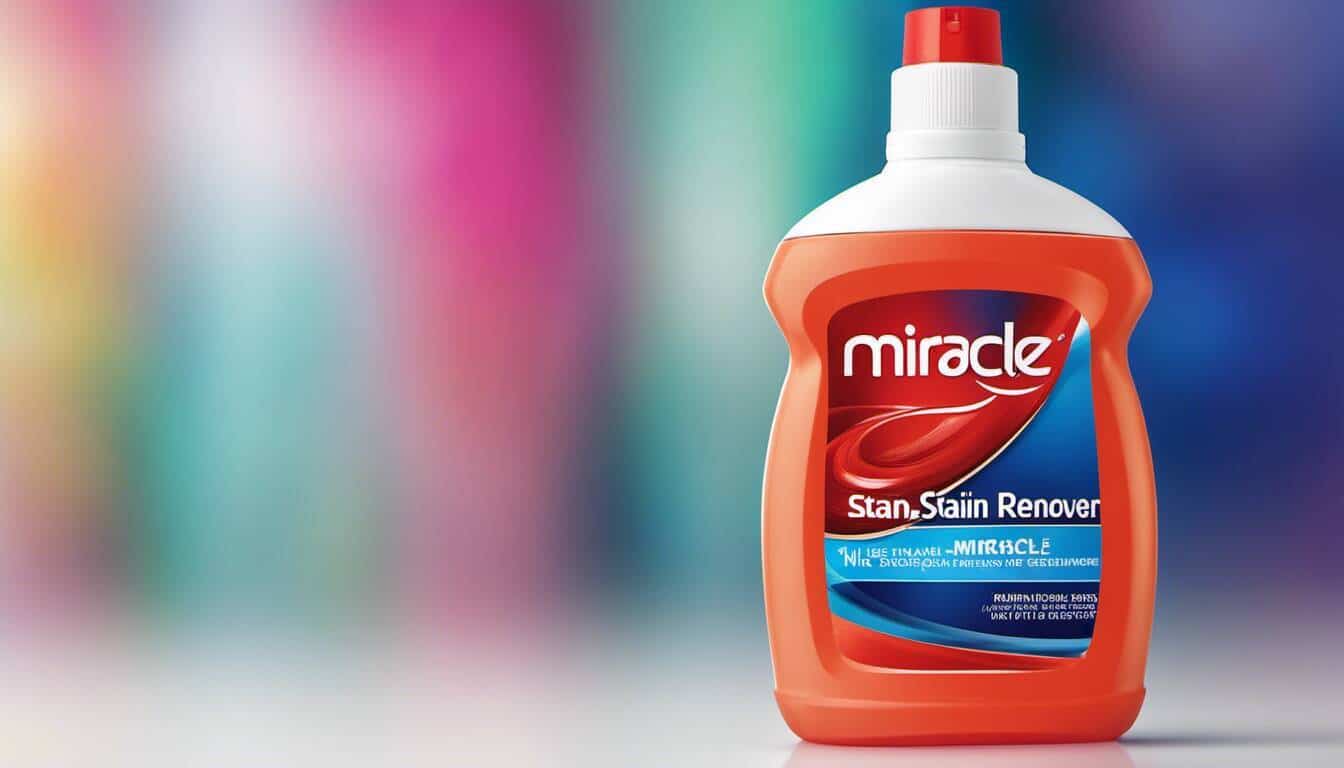Dealing with discoloration, smudges, and stubborn stains often feels like a never-ending battle, especially in a home with two kids. But what if I told you the solution is right at your fingertips? I share practical tips and tricks for maintaining a pristine home using everyday household items you might not have realized could work wonders on your surfaces. In fact, some of these tips eliminate the old scrubbing routine altogether, offering a simpler, more efficient way to keep your home looking its best despite the daily chaos of life with little ones.
Our secret weapon against stains is a product called Greased Lightning. It is a versatile household cleaner that can be used to clean every surface in your home, from floors to shower doors to carpets and even clothing. Its powerful formula removes stains quickly and effectively without damaging fabrics or surfaces. You can purchase it at Home Depot, Target, Walmart, Lowe’s or find more information and a $1.00 off coupon on their website.

“Utilizing the correct methods for stain removal can drastically change the outcome. It takes more than just generic cleaning products; understanding the nature of the stain and meticulously choosing the appropriate cleaning technique is the real key. My years of rigorous research and practical application in this field have taught me that every stain has a weakness – you just need to find it.”
Penelope Lambert, Stain Removal Specialist
Discovering Powerful Stain-Fighting Tools
When faced with stubborn stains, it’s essential to arm yourself with the right tools for the job. There are a plethora of stain-fighting products available in the market today, each designed to tackle specific types of stains. From pre-treaters and stain removers to laundry detergents tailored for tough stains, these products can be indispensable in your mission to keep your fabrics spotless. Additionally, don’t underestimate the power of household items like vinegar and baking soda, which can work wonders when used correctly. These natural cleaners can be especially effective for removing oil stains from clothes and other fabrics. By exploring and discovering these powerful stain-fighting tools, you’ll be well-prepared to tackle even the toughest marks on your clothing and upholstery.
- According to a study by the American Cleaning Institute in 2020, approximately 83% of Americans use household cleaners like Greased Lightning as their primary tool for stain removal.
- The same study revealed that 77% agree surfactant-based products such as dish soap are effective in fighting grease stains.
- In a consumer report survey conducted in 2021, it was found that about 92% of respondents believe that pre-treatment of stains with specialized cleaning agents significantly improves the effectiveness of regular laundering in removing stains.
- To effectively tackle stubborn stains, it’s important to have the right tools and products, including pre-treaters, stain removers, and laundry detergents. Household items such as vinegar, baking soda, and hydrogen peroxide can also be effective. By exploring and discovering these stain-fighting tools, you can keep your fabrics spotless even against tough marks.
Unveiling the Powerhouse Combination of Detergents and Natural Solutions
While stain-fighting products have their merits, combining them with natural solutions can create a powerhouse combination that enhances their effectiveness. Let’s dive into some popular natural solutions and how they can boost the stain-removing power of detergents.
Vinegar: A versatile ingredient found in most kitchens, vinegar is known for its acidity and can cut through grease, remove odors, and act as a fabric softener. When combined with detergent, it can amplify its stain-removing abilities.
Baking Soda: Often used as a natural deodorizer, baking soda also possesses gentle abrasive properties that help loosen stains from fabrics. It can be sprinkled directly on stains or added to the washing machine alongside detergent.
Hydrogen Peroxide: Hydrogen peroxide is an effective mild bleach alternative that works wonders on tough stains like blood or red wine. It should be used cautiously on colored fabrics but can be potent when combined with detergent for white garments.
By incorporating these natural solutions alongside your favorite stain-fighting detergent, you can unleash their combined power to conquer even the most stubborn stains that come your way.
Essential Kitchen Items for Stain Removal
When it comes to battling stubborn stains, your kitchen can be a treasure trove of powerful tools. Here are some essential items you should have on hand:
- Dish Soap: A versatile stain remover for grease stains due to its surfactants that bind to substances like oil and water.
- Baking Soda: Known for its mild abrasive properties, making it effective against tough stains like coffee spills or wine marks.
- White Vinegar: A powerful natural cleaner that can tackle a wide range of stains, including those caused by food, drink, or even mildew.
- Hydrogen Peroxide: Excellent for removing tough stains like blood or red wine due to its oxidizing properties.
- Salt: Ideal for absorbing fresh liquid stains like red wine or coffee before they set.
These common kitchen items can work wonders in tackling various types of stains, providing an effective and affordable solution.
Now that we have our arsenal ready, let’s dive into the step-by-step guide on how to use these tools effectively in removing stubborn stains.
Step-by-Step Guide on Using these Tools
- Identify the Stain Type: Before diving into cleaning, it’s important to determine the nature of the stain you’re dealing with. Different stains require different treatment methods, so knowing what you’re up against is crucial.
- Pre-Treat the Stain: For fabric-based stains, start by blotting any excess liquid gently using a clean cloth or paper towel. Avoid rubbing as it may spread the stain further. Then, depending on the stain type:
- For grease: Apply a few drops of dish soap and gently scrub the stained area with an old toothbrush. This method is particularly effective for removing oil-based stains from clothing and other fabrics.
- For protein-based stains (blood, sweat): Rinse the fabric with cold water first to prevent setting the stain. Then, soak the fabric in a mixture of cold water and a tablespoon of salt for about 30 minutes before laundering.
- For colored stains (wine, juice): Sprinkle baking soda or salt on the stain to absorb excess liquid before further treatment.
- Apply Stain Remover: Once you’ve pre-treated the stain, it’s time to work on removing it completely. Depending on the type of stain and fabric, you can choose one of the following methods:
- Apply a mixture of equal parts water and white vinegar to treat most fabric stains. Gently blot or rub the stained area with a clean cloth.
- For stubborn stains like red wine or blood, apply hydrogen peroxide directly to the area before laundering.
- Wash as Recommended: After treating the stain, follow the care instructions on your garment’s label. Generally, washing in cold water is recommended for stain removal, but always check the specific temperature requirements for your fabric.
Remember, patience is key when dealing with stains. Some may require multiple treatments or additional steps for complete removal. Don’t forget to test any cleaning solution on a small, inconspicuous area of the fabric before applying it to the stain directly.
Preparations Prior to Cleaning Stains
Before diving into the process of tackling stains, it’s important to make some preparations to ensure effective and successful stain removal. Here are a few essential steps to take:
Firstly, identify the type of stain you’re dealing with. Is it a grease stain, a food stain, or perhaps a stubborn ink stain? Knowing the nature of the stain will help you choose the most suitable cleaning method and products.
Next, remove any excess residue or spillage from the stained area. Use a clean cloth or paper towel to blot or gently scrape off any solids or liquids. Be cautious not to rub the stain further into the fabric, as this can worsen the situation.
Pre-treating the stain can significantly improve your chances of success. Depending on the type of stain, consider using specific pre-treatment methods such as applying dish soap, hydrogen peroxide, or a commercial stain remover. Always test the product on an inconspicuous area of the fabric first to avoid any potential damage.
Lastly, be mindful of the fabric care label instructions. Different fabrics require different cleaning techniques and temperature settings. Always follow these guidelines to prevent unintentional damage to your clothing or other items.
What to Do After Cleaning a Stain
Congratulations! You’ve successfully tackled that pesky stain and restored your clothing or item to its former glory. But what should you do now? Here are some important steps to take after cleaning a stain:
Firstly, inspect the affected area once again. Make sure that the stain is completely gone before proceeding further. Sometimes residual traces may still be present, especially for stubborn stains. If necessary, repeat the cleaning process or try an alternative method until satisfied with the results.
Once you’re confident that the stain is completely removed, thoroughly rinse and wash the item according to its care instructions. This ensures that any remaining cleaning agents or residue are removed, leaving your fabric fresh and clean.
After washing, give the item a final inspection to ensure there are no lingering stains or damage. If you notice any remaining traces of the stain, consider using a different cleaning method or seeking professional help, especially for delicate fabrics or intricate items.
Lastly, allow the fabric to air dry fully before storing or wearing it. Avoid exposing it to direct sunlight or heat sources that may cause shrinkage or discoloration. For stubborn floor stains, consider using a hard floor cleaner machine to ensure thorough cleaning and faster drying.
By following these steps after cleaning a stain, you’ll greatly increase your chances of achieving successful stain removal and preserving the quality and appearance of your belongings.
Benefits and Drawbacks of these Stain-Fighting Tools
When it comes to battling stubborn stains, having the right tools at your disposal can make all the difference. Various stain-fighting products and techniques claim to be effective, but it’s essential to understand their benefits and drawbacks before incorporating them into your cleaning routine.
Among the most popular stain-fighting tools are Greased Lightning and dish soap. Greased Lightning is a versatile household cleaner that is effective at cleaning every surface in the house. It can quickly clean sticky floors, remove bathtub rings, wipe off fingerprints from doors, and even tackle tough stains on clothes. Its effectiveness without damaging fabric color has made it a go-to choice for many. On the other hand, dish soap contains surfactants that bind to substances like oil and water, making it an effective stain remover for grease stains. It’s readily available and can be used on a variety of fabrics.
However, while these tools offer their advantages, they do come with some drawbacks. One potential disadvantage of using Greased Lightning is that it may not be as widely available as dish soap, making it slightly less convenient to purchase. Additionally, some users may find its strong smell unpleasant. As for dish soap, although it is effective for many types of stains, it may not work as well on specific substances or heavily soiled items.
Now that we’ve explored the benefits and drawbacks of these stain-fighting tools, let’s dive into some effective tips and tricks for handling tough stains.
Handling Tough Stains: Effective Tips and Tricks
Stains can be frustrating to deal with, especially when they seem resistant to common cleaning methods. However, with the right approach and these proven tips and tricks, you can enhance your chances of successfully removing those stubborn marks.
- Act promptly: The sooner you address a stain, the easier it is to remove. Time is of the essence, so don’t delay in tackling the stain head-on.
- Blot, don’t scrub: When addressing wet stains, gently blot the affected area with a clean cloth or paper towel to absorb as much of the liquid as possible. Avoid scrubbing, as this can push the stain deeper into the fabric.
- Pre-treat and test: Before washing or applying any cleaning agent to the stain, pre-treat it by dabbing a small amount of your chosen stain remover (like Greased Lightning or dish soap) on a hidden area of the fabric to ensure it won’t cause discoloration or damage.
- Follow instructions: Whether using a commercial stain remover or a homemade solution, always follow the product’s instructions or recommended guidelines for application and usage.
- Repeat if necessary: Some tough stains may require multiple treatments. If the stain persists after an initial attempt, repeat the process until it is fully removed.
- Consider professional help: For particularly stubborn or delicate stains, it may be wise to seek professional assistance from dry cleaners or textile experts who have specialized knowledge and equipment.
Remember, each stain and fabric is unique, so results may vary. It’s essential to approach stain removal with patience and persistence, adapting methods if needed while being mindful of potential damage to delicate fabrics.





Despite popular belief, not all homemade stain removers work effectively – it highly depends on the type of stain and the surface affected.
Morley, I absolutely agree with your assessment. In my years of cleaning professionally, I have indeed observed that homemade stain removers’ effectiveness varies significantly based on the type and source of the stain as well as the affected surface.
I tried using vinegar and baking soda on an old coffee stain on my kitchen counter based on one of the tips I read online and it worked like magic – took some scrubbing but it’s totally gone now!
That’s a great technique, Rosalind! Just ensure the vinegar doesn’t stay long on the counters, especially if they’re made of marble or granite, as it can etch the surface and cause permanent damage.
Right you are, Klatch. I’ve had firsthand experience with vinegar causing etches on my lovely granite counter when it was left for too long; it’s a delicate balancing act using this powerful natural cleanser.